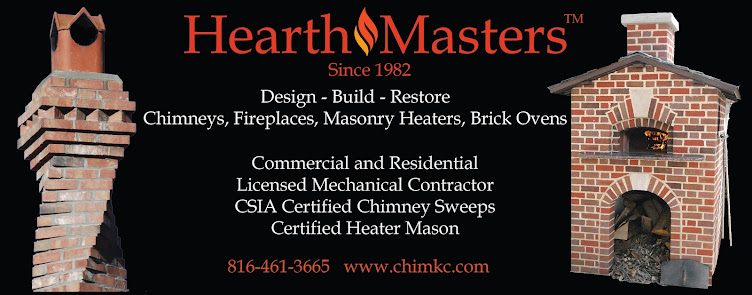As we all contend with the Coronavirus worldwide, emergency preparedness is on everyone's mind. I'm sure by now that most people have become painfully aware of how unprepared they have been, and are considering how to get ready for the next emergency. And there will be one, no doubt.
Emergency heating and cooking should be something that everyone plans for. We've all experienced temporary electrical outages, and there may be a time when gas is not available, either. As someone familiar with wood-fired appliances, I recommend that everyone has a backup plan using the appliances of your choice.
 There are several options available. The first thing most people think about is getting a wood stove or wood-burning fireplace insert. These are good options for supplemental or primary heating if the appliance is located in the center of the home. Keep in mind that the bedrooms will be much cooler than the common spaces. An open floor plan is best so that heat can reach further.
There are several options available. The first thing most people think about is getting a wood stove or wood-burning fireplace insert. These are good options for supplemental or primary heating if the appliance is located in the center of the home. Keep in mind that the bedrooms will be much cooler than the common spaces. An open floor plan is best so that heat can reach further.
For cooking, using the top of a wood-burning freestanding stove is an option, but it can be frustrating to use the small space over a long period of time. A better option would be a wood-burning cookstove with a stovetop and oven. As a bonus, the stove produces heat as well.
In Italy and France, it is very common for each household to have an outdoor brick oven and the idea is becoming very popular in the U.S. With an outdoor wood-fired oven it gives a person the option of using a different fuel which may be more available than gas or propane, and it keeps heat out of the kitchen in the summer months. Food tastes better when cooked in a brick oven, too. Wood-fired ovens can be heated to over 700 degrees, which is excellent for cooking pizza.
The best option, in my opinion, is a masonry heater. Masonry heaters are large site-built or pre-cast kits that are assembled on site. They have a large mass of masonry and interior channels that trap heat. By far, they are the most efficient and clean-burning appliances and use 1/3 the amount of wood that a high-efficiency wood-burning stove or insert uses to produce the same amount of heat. Masonry heaters work differently as they retain and release heat over a longer period of time. A great option to add is a bake oven over the masonry heater firebox on either side. Most people prefer to have the oven on the kitchen side of the heater, and the firebox on the living room side. This option is the most expensive.
Plan now for installation of an appliance this summer, before the busy fall season.
___________________________________________
Marge Padgitt is a CSIA Certified Chimney Sweep and NFI Certified Woodburning Specialist. She is the author of The Chimney and Hearth Pro's Resource Book, and The Homeowner's Guide to Heating and Cooking with Wood. Reach her at hearthmastersboss@gmail.com
Emergency heating and cooking should be something that everyone plans for. We've all experienced temporary electrical outages, and there may be a time when gas is not available, either. As someone familiar with wood-fired appliances, I recommend that everyone has a backup plan using the appliances of your choice.
 There are several options available. The first thing most people think about is getting a wood stove or wood-burning fireplace insert. These are good options for supplemental or primary heating if the appliance is located in the center of the home. Keep in mind that the bedrooms will be much cooler than the common spaces. An open floor plan is best so that heat can reach further.
There are several options available. The first thing most people think about is getting a wood stove or wood-burning fireplace insert. These are good options for supplemental or primary heating if the appliance is located in the center of the home. Keep in mind that the bedrooms will be much cooler than the common spaces. An open floor plan is best so that heat can reach further. |
| Cookstove by Hearthstone |
 |
| Outdoor brick oven by Gene Padgitt |
 |
| Masonry heater with bake oven by Gene Padgitt |
Plan now for installation of an appliance this summer, before the busy fall season.
___________________________________________
Marge Padgitt is a CSIA Certified Chimney Sweep and NFI Certified Woodburning Specialist. She is the author of The Chimney and Hearth Pro's Resource Book, and The Homeowner's Guide to Heating and Cooking with Wood. Reach her at hearthmastersboss@gmail.com






